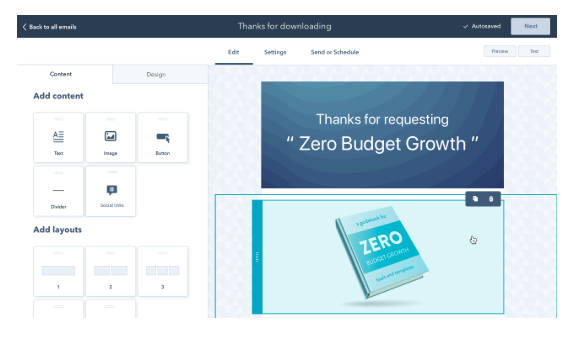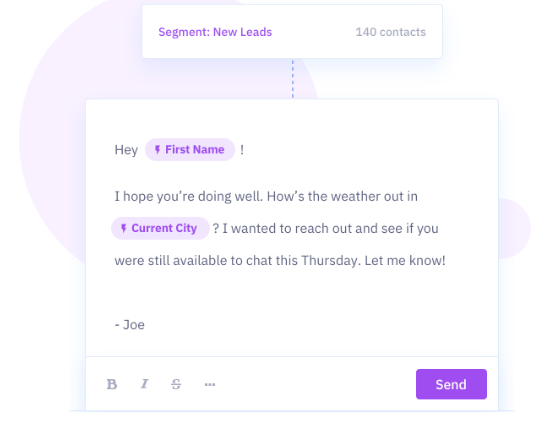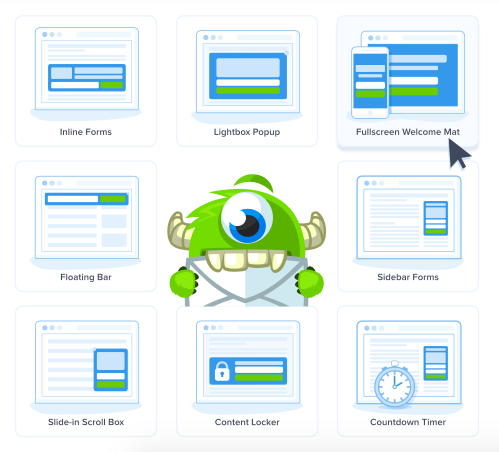When I first began my marketing career, I was envious of emails.
While this sounds like an interesting quirk, I'm pretty sure most marketers can agree: some emails are hard not to envy.
From sparkling campaigns to flawless design, sometimes I open a newsletter and I'm surprised at how brands segment me into a list that's so accurate.
Email lists are an essential aspect of any marketing strategy, since they enable marketers to target the right subscribers and grow leads.
To personalize marketing emails and keep ROI in check, email list management is a crucial step in marketing efforts. It can help your team generate leads while simultaneously creating a more delightful, personalized customer experience.
Using email management tools is an easy way to analyze metrics that you don't have time to collect yourself, like CTR subscriber count. Additionally, this software can provide you with robust insights and suggestions on how to improve ROI.
To save you the hassle of researching the best software tools for email list management, we've done the heavy lifting for you. Take a look at the 10 best email list management software tools, below.
1. MailChimp
Price: Free plan, then $9-$299/mo.
I really enjoy the simplicity of MailChimp. Learning how to use its tools and feel like an expert only took about 20 minutes because of the nice user interface. MailChimp also has some impressive free options, letting you have up to 2,000 subscribers.
As part of the free component, you can also send a limited number of automated emails, use some of MailChimp's their email templates, set up auto-responders, and analyze your campaigns. Because of the capabilities of MailChimp, it's a great starter software for marketers with a limited budget.
2. Zapier
Price: Free plan, then $19-$599/mo.
Zapier enables you to set up workflows, which can sync to apps like Dropbox and Gmail. Additionally, Zapier lets you import a subscriber list from Facebook and Eventbrite, as well as Google Sheets.
For further syncing using Zapier, you can back up your data on Google Sheets for more analysis. If you're looking for a tool that can help you consolidate workflows a little better, Zapier might be for you.
Zapier's interface is similar to MailChimp's, where you can build and create workflows or choose from a template offering. The interface also lets you know tips for how to use the app to your advantage when planning workflows, so a marketing team that's just starting can learn how to get up to speed quickly.
3. OptinMonster
Price: $19-$49/mo.
OptinMonster is another template-based choice for you. Their interface allows for a little creation; they offer an email form template that lets you choose how you set up your email.
With OptinMonster, a huge function of the platform is giving customers the choice to opt-in to emails and track their progress. Additionally, the interface supports multiple campaign structures and has different toggles for the analytics you choose to track.
This platform is a great choice if you feel comfortable with email marketing to the point where you're able to design a workflow that works best for the type of campaign you're rolling out. If WordPress integrations are key for you, OptinMonster is great for that, as well — the software has its own plugin that creates lightboxes and subscribe forms.
4. Campaign Monitor
Price: $9-$149/mo.
Agencies and freelancers will likely enjoy Campaign Monitor, software that was made for the creative professionals who manage email campaigns. A huge asset of Campaign Monitor is that you can manage every client (different businesses or multiple social media accounts in general) from one account.
More Campaign Monitor features include brand personalization, the ability to determine prices for your services, template builders, RSS email, A/B testing, and analytics reporting.
If your core job function is running email marketing from multiple accounts, looking into Campaign Monitor is definitely a good idea. For the base plan at $9/month, you can send up to 2,500 emails to a subscriber list of up to 500.
5. HubSpot
Price: Free plan, or $800/mo.
HubSpot's email marketing is a part of the Professional CRM. Its main functions are to delight customers using easy tools for marketers. I made my first email campaign using HubSpot and it took about 15 minutes to create a professional-looking draft that I could come back to and refine.
 You can tailor every email in a campaign to target subscribers during specific lifestyle stages, or depending upon any other contact information. HubSpot also offers A/B testing and analytics, so you can be confident in your email campaign as you send and track it.
You can tailor every email in a campaign to target subscribers during specific lifestyle stages, or depending upon any other contact information. HubSpot also offers A/B testing and analytics, so you can be confident in your email campaign as you send and track it.
HubSpot is an effective email marketing software choice for businesses at every stage of their journey, whether you're looking for a solution to having too many software platforms or are just a team of one.
6. Drupal
Price: Available by contact
The scalability of Drupal is one of its major assets. It's an open-source software system that helps you create a huge website, or a small, functional one — whichever option for which your business is best-suited.
Drupal has flexibility with its web design that will go over well with developers but is also easy enough to understand for marketers who never took a coding class (myself included). They even have a "Drupal for Marketers" option prior to signing up that gives you the best of their site as it relates to your job functions.
From industry to features, you can choose how you run your website. Do you prefer running it centered around the arts/entertainment industry, or do you want the central function to be ecommerce? Drupal gives you that choice.
7. Constant Contact
Price: $20-$45/mo.
Constant Contact is another software option that gives you templates available for customization. You can edit their templates with one click, making email creation very easy.
With Constant Contact, you can use expansive features such as open rate tracking, click rate tracking, and social media integration. For an email management tool, these are helpful features that enable you to perform multiple marketing functions on one platform.
8. ActiveCampaign
Price: $9/mo.
If you find yourself struggling with campaigns, consider ActiveCampaign's tool, which helps you create your entire campaign start-to-finish. This creation wizard helps users create emails, segment lists, and even offers reporting capabilities so you can keep up with ROI.

The tool also lets you test emails before you send them and sets up auto-response emails. With the website's base plan, you can send unlimited emails to 500 subscribers, which is a nice choice for small businesses or start-ups
9. Mad Mimi
Price: Starts at $10/mo.
Mad Mimi was the first email management software I used. I liked using Mad Mimi because as a beginner, it was easy enough to follow when creating emails. The software made press emails look professional and newsletters were a breeze to make.
Mad Mimi is a great choice for beginners who are interested in diving into the specifics of email creation because it gives walkthroughs of some features that might be difficult to understand, like RSS to email or drip campaigns.
10. AdRoll
Price: Starts at $300
With AdRroll, you'll get software that blends email marketing and display advertising efforts. It also combines the two with social media planning, which enables you to see a more holistic overview of your email marketing experience.
Being such an expansive system, AdRoll comes with a slew of extra features to further customize campaigns. Subscriber lists from other platforms can be uploaded onto the platform seamlessly and work with you to attract leads. This is because AdRoll is mainly focused on using email marketing to support targeted ad experiences for customers.
If you're a medium-sized business wanting to consolidate large portions of your marketing efforts, such as email, advertising, and social campaigns, AdRoll is a great choice when picking email software.
Thanks to software and technology in general, managing segmented lists has never been easier. Fit to your needs, you can easily find software that's right for your business journey and customer flows. And, who knows —you might even send the next email to leave me envious.

No comments:
Post a Comment